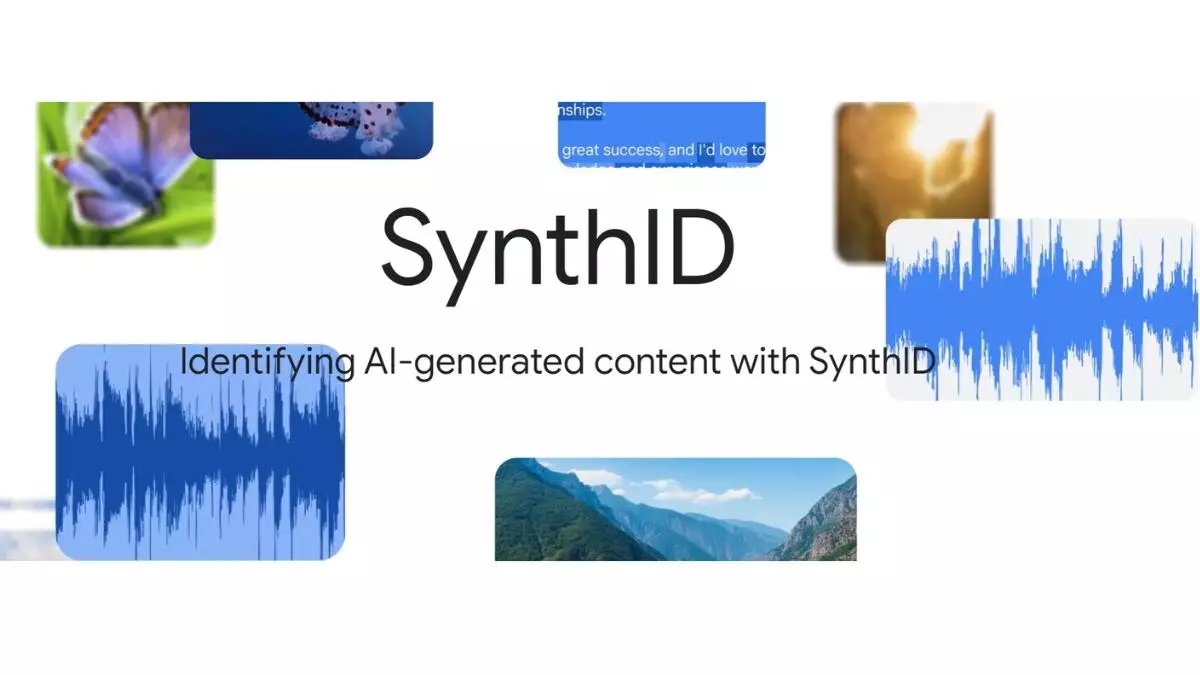As AI-generated content continues to proliferate across the digital landscape, the pressing need for reliable detection methods has never been more significant. Reports suggest that a staggering 57.1% of sentences online, particularly those translated into multiple languages, are produced using AI tools. While this rise in automated content generation brings efficiency and creativity to many fields, it also poses challenges, particularly in discerning authenticity. With misinformation becoming increasingly sophisticated, the potential for malicious applications of AI content generators raises serious ethical concerns, especially regarding politics and public opinion.
To address these challenges, Google DeepMind has stepped into the fray with the introduction of SynthID, a pioneering watermarking technology designed to identify AI-generated text effectively. This initiative is part of a broader strategy to mitigate the risk of false narratives and deceptive information online.
On a recent Wednesday, Google DeepMind unveiled SynthID, a comprehensive AI watermarking tool. While it has the potential to be employed across various content types—texts, images, videos, and audio—its current offering is limited to text watermarking. This restriction appears to be a calculated decision to focus on the area most prone to misuse: textual misinformation. By making SynthID part of Google’s Responsible Generative AI Toolkit, the tech giant is encouraging both businesses and developers to integrate this essential tool into their operations.
Accessible through both the Responsible Generative AI Toolkit and Google’s Hugging Face listing, SynthID represents an important step toward transparency in AI-generated content. As technology continues to advance, the notion of accountability in information dissemination becomes critical. The implications of SynthID extend beyond mere detection; they venture into establishing trust in digital content, which is increasingly eroded by the ubiquity of AI-generated text.
At the heart of SynthID’s functionality lies a sophisticated machine-learning model that predicts probable word sequences, allowing it to integrate a watermark based on the original content’s structure. This method reveals itself in practical terms: when processing a sentence such as “John was feeling extremely tired after working the entire day,” the tool identifies the limited set of words that could feasibly follow “extremely.” By inserting synonyms for these words throughout the text, SynthID creates an invisible watermark that can later be verified.
This innovative approach to watermarking not only enhances detection capabilities but also adds an additional layer of complexity that malicious actors might struggle to bypass. Unlike traditional watermarking, which often fails in text due to the ease of paraphrasing, SynthID’s technique ensures that the integrity of information can be maintained despite potential alterations.
However, as advanced as SynthID might seem, it is crucial to recognize that the technology is still in its infancy, particularly in broader applications. Currently, the methods employed for watermarking images, audio, and video remain exclusive to Google. As the digital landscape evolves, developing these capabilities for public use will be essential. The success of SynthID relies heavily on widespread adoption and collaboration among businesses, developers, and content creators.
In addition to these technological strides, tackling the issues surrounding misinformation necessitates an ongoing dialogue about digital ethics and the responsibilities of content creators. The real challenge lies ahead: how do we create a balance between innovation and the preservation of truth? SynthID is a promising step toward a more transparent digital environment, but its effectiveness will ultimately depend on how intently we curb the tide of AI-generated misinformation.
Google DeepMind’s SynthID is a groundbreaking initiative aimed at combating the rampant spread of AI-generated misinformation. By equipping developers and businesses with powerful watermarking capabilities, it sets the stage for a trustworthy digital framework. However, the success of SynthID will ultimately depend on its commitment to both innovation and a comprehensive approach to safeguarding the truth in the ever-evolving landscape of technology. The world watches to see how this technology will shape the future of AI-generated content and the integrity of information.


Leave a Reply